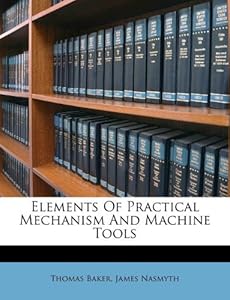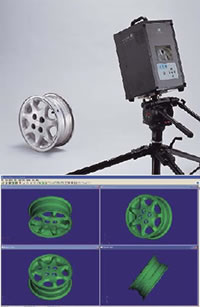
3d scanner head image

Heights!
kindly tell step by step .
Sir but not like this ..
If you stick your head in a bucket of cement that should work.
Answer
How you get your face into the computer is either you model it (lot of work) or you have access to a 3D laser scanner. That is fairly easy, can however still be time consuming if you want to put a number of scans together. If there is a university where you live, check out their engineering or art department if they have one. If not forget about it, unless you happen to be really rich, it's going to be more expensive than a new car.
Before you start see that you know you have access to some way to print it or get it milled. Make sure you know the requirement for the mesh and make sure you have access to the appropriate programs which generate the correct mesh.
Unless you have access to everything (e.g. you are at university and it has the equipment) it will be faster and easier and cheaper if you do body casting and make a mold of your face. How to do this has been explained in this forum many times, there are websites and books, so you should have no problems finding it out if you are serious about it.
How you get your face into the computer is either you model it (lot of work) or you have access to a 3D laser scanner. That is fairly easy, can however still be time consuming if you want to put a number of scans together. If there is a university where you live, check out their engineering or art department if they have one. If not forget about it, unless you happen to be really rich, it's going to be more expensive than a new car.
Before you start see that you know you have access to some way to print it or get it milled. Make sure you know the requirement for the mesh and make sure you have access to the appropriate programs which generate the correct mesh.
Unless you have access to everything (e.g. you are at university and it has the equipment) it will be faster and easier and cheaper if you do body casting and make a mold of your face. How to do this has been explained in this forum many times, there are websites and books, so you should have no problems finding it out if you are serious about it.
What do you think of Richard Linklater as a director?

Donny
Dazed and Confused is probably my third favorite comedy film of all time, but I have barely seen any of Linklater's other stuff besides The School of Rock and Bad News Bears
http://www.imdb.com/name/nm0000500/#Director
it looks like him and Ethan Hawke have collaborated a lot too. so which of his movies movies have you seen and would recommend, and also rate and rank his films
Answer
He's one of contemporary American cinema's more interesting voices.
Linklater is, of course, very associated with Austin, TX, similar to Robert Rodriguez. Both of whom exploded in popularity on the festival circuit around the same time, Linklater with Slacker and Rodriguez with El Mariachi, both microbudget films made by clearly skilled directors. It's interesting to compare their careers since... Rodriguez, while talented in certain respects, tends to live inside his own ass. Awful 3D movies based on his children's whims (see, or don't see: Sharkboy and Lavagirl, Shorts) are perhaps his nadir. Linklater is also indulgent, but in more interesting ways, and he always brings the audience into his obsessive dreams. Whether it's mainstream comedy (School of Rock), an animated head-trip (Waking Life, A Scanner Darkly), a period piece (Me and Orson Welles), etc., his films always feel distinctly Linklater-esque, yet are also always accessible. It's a neat trick, I think. His films also tend to convey big, even confrontational ideas in a low-key, appealing way, as if he's shouting a message without cinematically raising his voice. This is certainly true of the last five minutes of A Scanner Darkly.
His absolute best achievements, however, are Before Sunrise and Before Sunset. They're just...cinematic bliss, in my opinion. He, Ethan Hawke, and Julie Delpy created two indelible characters who feel very specific yet also completely universal. And he let these characters wander through beautiful European cities while having extended, free-flowing conversations about sex, life, art, politics, family, etc. It's almost mind-blowing how much depth he finds in such simple form. Before Sunrise is a perfect portrait of the romance and terror of being young, and Before Sunset is a gentle, yet incisive autopsy of middle-aged regret and the eternal question of whether it's ever too late. Just fucking fantastic movies, man. They feel so -alive-, and they sort of changed my life, at least as a writer and as a moviegoer.
He's one of contemporary American cinema's more interesting voices.
Linklater is, of course, very associated with Austin, TX, similar to Robert Rodriguez. Both of whom exploded in popularity on the festival circuit around the same time, Linklater with Slacker and Rodriguez with El Mariachi, both microbudget films made by clearly skilled directors. It's interesting to compare their careers since... Rodriguez, while talented in certain respects, tends to live inside his own ass. Awful 3D movies based on his children's whims (see, or don't see: Sharkboy and Lavagirl, Shorts) are perhaps his nadir. Linklater is also indulgent, but in more interesting ways, and he always brings the audience into his obsessive dreams. Whether it's mainstream comedy (School of Rock), an animated head-trip (Waking Life, A Scanner Darkly), a period piece (Me and Orson Welles), etc., his films always feel distinctly Linklater-esque, yet are also always accessible. It's a neat trick, I think. His films also tend to convey big, even confrontational ideas in a low-key, appealing way, as if he's shouting a message without cinematically raising his voice. This is certainly true of the last five minutes of A Scanner Darkly.
His absolute best achievements, however, are Before Sunrise and Before Sunset. They're just...cinematic bliss, in my opinion. He, Ethan Hawke, and Julie Delpy created two indelible characters who feel very specific yet also completely universal. And he let these characters wander through beautiful European cities while having extended, free-flowing conversations about sex, life, art, politics, family, etc. It's almost mind-blowing how much depth he finds in such simple form. Before Sunrise is a perfect portrait of the romance and terror of being young, and Before Sunset is a gentle, yet incisive autopsy of middle-aged regret and the eternal question of whether it's ever too late. Just fucking fantastic movies, man. They feel so -alive-, and they sort of changed my life, at least as a writer and as a moviegoer.
Powered by Yahoo! Answers




























